Signal enhancement and suppression during visual-spatial selective attention
- PMID: 20807513
- PMCID: PMC2955768
- DOI: 10.1016/j.brainres.2010.08.076
Signal enhancement and suppression during visual-spatial selective attention
Abstract
Selective attention involves the relative enhancement of relevant versus irrelevant stimuli. However, whether this relative enhancement involves primarily enhancement of attended stimuli, or suppression of irrelevant stimuli, remains controversial. Moreover, if both enhancement and suppression are involved, whether they result from a single mechanism or separate mechanisms during attentional control or selection is not known. In two experiments using a spatial cuing paradigm with task-relevant targets and irrelevant distractors, target, and distractor processing was examined as a function of distractor expectancy. Additionally, in the second study the interaction of perceptual load and distractor expectancy was explored. In both experiments, distractors were either validly cued (70%) or invalidly cued (30%) in order to examine the effects of distractor expectancy on attentional control as well as target and distractor processing. The effects of distractor expectancy were assessed using event-related potentials recorded during the cue-to-target period (preparatory attention) and in response to the task-relevant target stimuli (selective stimulus processing). Analyses of distractor-present displays (anticipated versus unanticipated), showed modulations in brain activity during both the preparatory period and during target processing. The pattern of brain responses suggest both facilitation of attended targets and suppression of unattended distractors. These findings provide evidence for a two-process model of visual-spatial selective attention, where one mechanism (facilitation) influences relevant stimuli and another (suppression) acts to filter distracting stimuli.
Copyright © 2010 Elsevier B.V. All rights reserved.
Figures
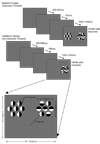

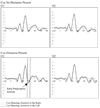





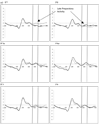



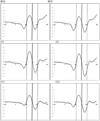

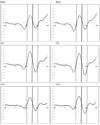



Similar articles
-
Effects of attentional filtering demands on preparatory ERPs elicited in a spatial cueing task.Clin Neurophysiol. 2009 Jun;120(6):1087-95. doi: 10.1016/j.clinph.2009.03.016. Epub 2009 May 1. Clin Neurophysiol. 2009. PMID: 19410504
-
Preparatory activity in visual cortex indexes distractor suppression during covert spatial orienting.J Neurophysiol. 2004 Dec;92(6):3538-45. doi: 10.1152/jn.00435.2004. Epub 2004 Jul 14. J Neurophysiol. 2004. PMID: 15254075
-
Spatially Guided Distractor Suppression during Visual Search.J Neurosci. 2021 Apr 7;41(14):3180-3191. doi: 10.1523/JNEUROSCI.2418-20.2021. Epub 2021 Mar 2. J Neurosci. 2021. PMID: 33653697 Free PMC article.
-
The role of alpha oscillations in spatial attention: limited evidence for a suppression account.Curr Opin Psychol. 2019 Oct;29:34-40. doi: 10.1016/j.copsyc.2018.11.001. Epub 2018 Nov 8. Curr Opin Psychol. 2019. PMID: 30472541 Free PMC article. Review.
-
Inhibition in selective attention.Ann N Y Acad Sci. 2020 Mar;1464(1):204-221. doi: 10.1111/nyas.14304. Epub 2020 Jan 17. Ann N Y Acad Sci. 2020. PMID: 31951294 Free PMC article. Review.
Cited by
-
Protecting visual short-term memory during maintenance: Attentional modulation of target and distractor representations.Sci Rep. 2017 Jun 22;7(1):4061. doi: 10.1038/s41598-017-03995-0. Sci Rep. 2017. PMID: 28642613 Free PMC article.
-
Cochlear activity in silent cue-target intervals shows a theta-rhythmic pattern and is correlated to attentional alpha and theta modulations.BMC Biol. 2021 Mar 16;19(1):48. doi: 10.1186/s12915-021-00992-8. BMC Biol. 2021. PMID: 33726746 Free PMC article.
-
Time Courses of Attended and Ignored Object Representations.J Cogn Neurosci. 2023 Apr 1;35(4):645-658. doi: 10.1162/jocn_a_01972. J Cogn Neurosci. 2023. PMID: 36735619 Free PMC article.
-
Neural and Behavioral Correlates of Attentional Inhibition Training and Perceptual Discrimination Training in a Visual Flanker Task.Front Hum Neurosci. 2018 May 23;12:191. doi: 10.3389/fnhum.2018.00191. eCollection 2018. Front Hum Neurosci. 2018. PMID: 29875644 Free PMC article.
-
The Caveats of observing Inter-Trial Phase-Coherence in Cognitive Neuroscience.Sci Rep. 2018 Feb 14;8(1):2990. doi: 10.1038/s41598-018-20423-z. Sci Rep. 2018. PMID: 29445210 Free PMC article.
References
-
- Awh E, Matsukura M, Serences JT. Top-Down Control Over Biased Competition During Covert Spatial Orienting. Journal of Experimental Psychology: Human Perception and Performance. 2003;29(1):52–63. DOI: 10.1037/0096-1523.29.1.52. - PubMed
-
- Barnhardt J, Ritter W, Gomes H. Perceptual load affects spatial and nonspatial visual selection processes: An event-related potential study. Neuropsychologia. 2008;46:2071–2078. DOI: 10.1016/j.neuropsychologia.2008.02.007. - PubMed
-
- Bles M, Schwarzbach J, De Weerd P, Goebel R, Jansma BM. Receptive field size-dependent attention effects in simultaneously presented stimulus displays. NeuroImage. 2006;30(2):506–511. DOI: 10.1016/j.neuroimage.2005.09.042. - PubMed
-
- Braithwaite JJ, Humphreys GW, Hulleman J. Color-based grouping and inhibition in visual search: Evidence from a probe detection analysis of preview search. Perception and Psychophysics. 2005;67(1):81–101. - PubMed
Publication types
MeSH terms
Grants and funding
LinkOut - more resources
Full Text Sources

